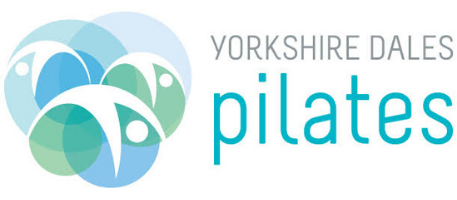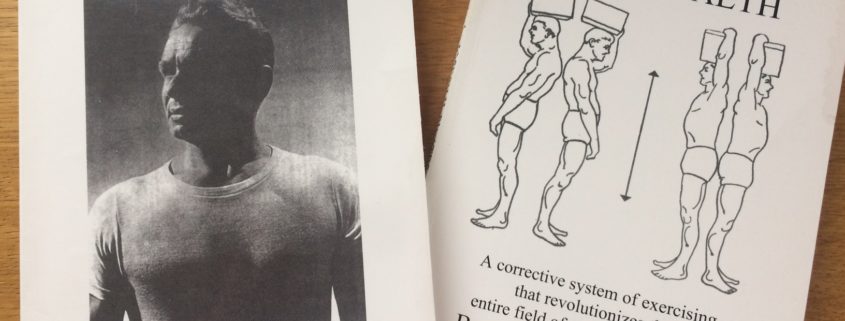Musings on the Life of Joseph Pilates
Return to Life Through Contrology (1945) and Your Health: A corrective system of exercising that revolutionises the entire field of physical education (1934), both by Joseph Pilates
This post is simply my thoughts on an extraordinary man. How many of us have ‘Pilates’ in our business name? I think he deserves our attention from time to time!
Imagine living between 1883 and 1967. As we wake up, freely run water, drink our fresh coffee, dress our kids in clothes fresh out of the washing machine, hop in our cars to our fancy studios with all the latest pilates’ apparatus, just imagine a life and world so very far removed, without all the mod cons and easy living we’ve come to expect. The last 125 years have seen the most immense changes on both a day to day and global scale, whilst it seems to me that some things have remained exactly the same.
Our obsession with health, wellbeing and fitness is certainly something that hasn’t wavered over the years. Despite being a sickly child, by the age of 14 Joseph Pilates was posing for anatomy charts, such had been his early commitment to sport, physical training and anatomical study. There will always be people striving for physical improvement and success. Joseph was one of these people and he took it to the extreme with a life dedicated to continuously refining his method of contrology, inventing a plethora of ingenious apparatus and keeping himself and those he taught in remarkably good health.
Throughout his life, it appears to me, he had a single minded determination and absolute self belief which would surpass many of the greatest modern day athletes. Joseph Pilates’ mother was a naturopath and his father, a prize winning gymnast so he came from good pedigree with role models to aspire to. Despite their poor background, the family prioritised exercise with his father, a metal worker by trade, fixing gym equipment in return for working out in the gym. It would seem that nothing, not even 2 world wars, family tragedy or poverty, stood in the way of Joseph’s desire to invent, to exercise and to teach.
What a wonderful legacy. Prioritise your health and it will stand you in good stead to deal with everything life throws at you.

Human resilience knows no bounds. For Joseph Pilates I expect his resilience was tested on numerous occasions but his experiences seemed to lead to greater tenacity and strength of character. He left Germany for the first time in early 1914 and found work as a circus performer in Blackpool, using his physical skill to perform and developing his own exercises to recover. This North West circus life was short-lived as Joseph was arrested at the outbreak of World War One and he would make the arduous journeys from Blackpool to Sandhurst to Jersey to Lancaster (the pic shows Lancaster Castle where Joseph Pilates was held in 1914) and finally to the Isle of Man where he would spend 4 years in a camp for German internees.
This was certainly no holiday camp but with 16,000 internees already at Knockaloe camp when he arrived, a German doctrine was well established with daily sport and exercise already taking place. Far from perfect, with food rations verging on starvation and the world in turmoil, still Joseph Pilates sought to maintain and improve his health and those of the thousands of internees.
He further developed his method of contrology and began to experiment using bed springs as resistance. I have no idea how people survived such conditions, both mentally and physically. The desire to not only stay alive but to improve themselves during captivity is hugely impressive and humbling.
The spirit of adventure lies within us all. Those ‘what ifs’ and ‘maybes’, once set into action, can lead us to places and people that enrich our lives and change the course of our careers. Joseph Pilates was both a survivor and an adventurer. He returned to Germany after the war (I don’t imagine England remained such a welcoming place) and continued his vocation of developing physical training techniques and inventing equipment.
Not a man to miss an opportunity, Joseph emigrated to New York in 1926 with his ideas, confidence and ever-increasing knowledge in a bid to improve the physical education standards in the US which at the time were far behind those in Germany. I hope that this was a happier time for him. By the age of 43 he had lived through the war, experienced the deaths of a baby sister and his first wife and left behind a daughter and stepson to travel to England.
On the passage to New York he met his third wife (I’m not sure when wife #2 came in!) Clara and it was with her that he established his gymnasium on Eighth Avenue at 56th Street in Manhattan. Many of us have dreamt, planned and put our own studios into reality. Joseph was our pioneer, leading the way in spaces dedicated to the teaching of his exercises.
The work/life balance is a constant factor in our lives. Way back in 1945 in his book Return to Life Through Contrology, Joseph Pilates wrote: ‘Telephones, automobiles and economic pressure all combine to create physical letdown and mental stress so great that today practically no home is entirely free from sufferers of some form of nervous tension’. This was 73 years ago! If only he could see the world now and its ever increasing reliance on and addiction to technology and the resulting impact on our day to day lives and wellbeing.
Joseph’s advice? Spend time outside away from city pollution, exercise, eat well, sleep well and perform contrology (his term for the method we now call pilates). He advocated hobbies, social entertainment, recreational activity and ‘every possible form of pleasurable living’ to ‘find us cheerful, contented and relaxed’. Sounds familiar? You’ll find this advice from every exercise teacher, PT, physiotherapist, movement specialist and GP in the land! What’s not to like? Moving more, spending time with friends and eating well are and always will be vital to our physical and mental health.
Keep doing what you’re doing. To say that Joseph Pilates had a impressive work ethic is an understatement. I’d like to hope that he took a holiday every now and again but from what I’ve read, the guy didn’t stop inventing, teaching, working and developing his methods of exercise until the day he died. Every day in the studio, step by step, muscle by muscle training himself and those he taught. Ultimately, what have I learnt from the man whose name is on the door of my studio and whose picture watches our every move? That I will never know what it’s like to blaze a trail in a post-war era, to live through poverty, wartime or to make my way in another country. I take my hat off to him and hold him in great respect. I have learnt that I am incredibly fortunate and privileged to have freedom, education and a job I love.
Overnight success does not happen overnight, it takes a lifetime. As pilates teachers we make a difference every day. And, little by little, we hope to leave a legacy, like that of Joseph Pilates, of enabling people to move more freely, grow in strength and confidence and feel better every single time they set foot in the studio.
For a detailed history, with particularly attention to Pilates’ life in the UK during World War One, I’ve found this wonderful site.




Leave a Reply
Want to join the discussion?Feel free to contribute!